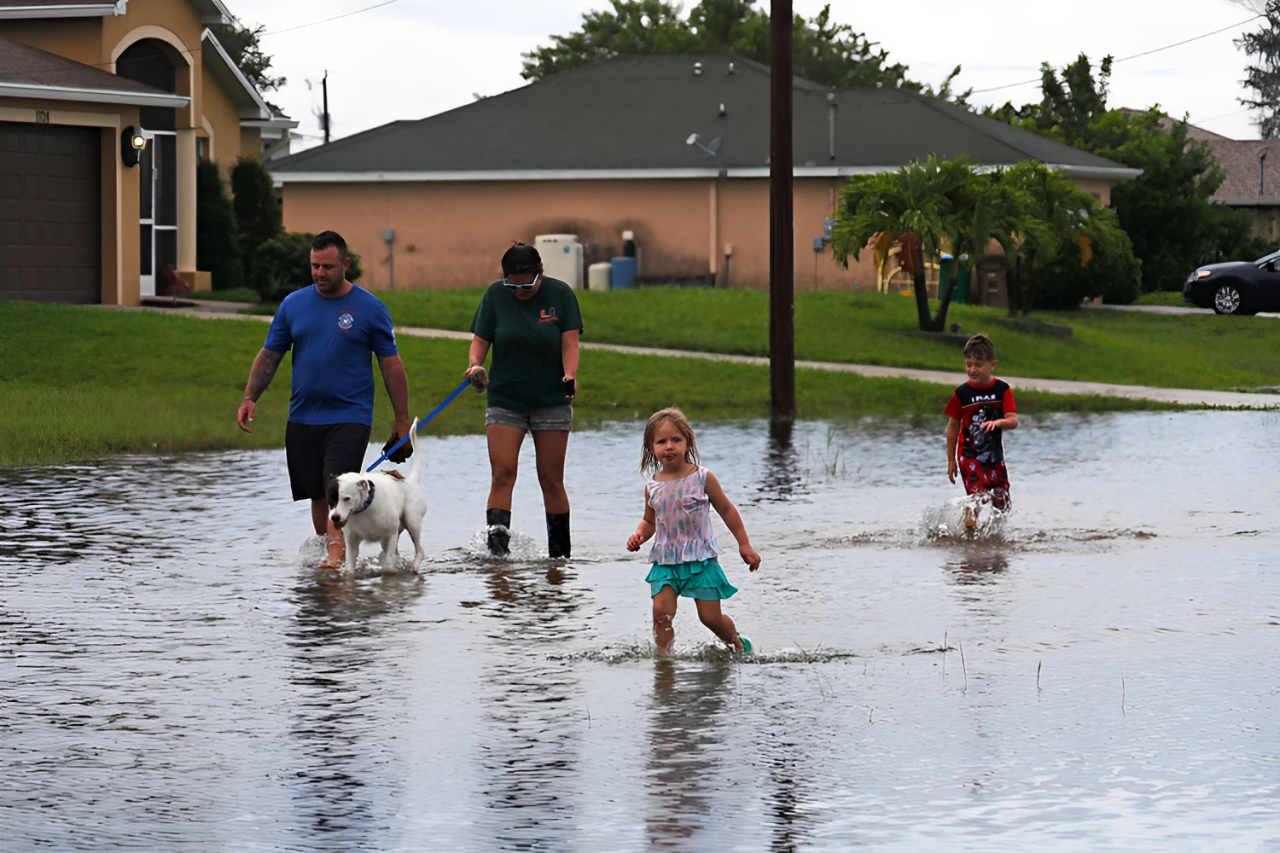Hurricane Helene Makes Landfall in Northwestern Florida as a Powerful Category 4 Storm!
Hurricane Helene made a powerful and destructive landfall in northwestern Florida late Thursday night, hitting the area as a Category 4 storm.
The storm brought with it dangerous winds, heavy rains, and what meteorologists are calling a “nightmare” storm surge that could have far-reaching effects across the southeastern U.S.
The National Hurricane Center reported that Helene came ashore at around 11:10 p.m. near the mouth of the Aucilla River in Florida’s Big Bend area, packing winds of up to 140 mph (225 kph).
This is the same region where Hurricane Idalia made landfall just last year, causing widespread damage. The ferocity of the two storms was nearly identical, highlighting just how vulnerable this part of Florida has become to major hurricanes.
Hurricane and flash flood warnings were issued across several states, including northern Georgia and western North Carolina, far beyond the immediate coast.
As of the latest updates, over one million homes and businesses in Florida were left without power, with another 50,000 affected in Georgia. The governors of Florida, Georgia, Alabama, the Carolinas, and Virginia declared statewide emergencies as they braced for further destruction.
As with many powerful storms, the loss of life is a tragic consequence. In Florida, one person was killed when a sign fell on their car, and two more lives were lost in Georgia due to a possible tornado linked to Helene’s approach.
Florida Governor Ron DeSantis warned residents that the situation would likely get worse and that more life and property could be lost as the storm continued.
“We’re going to be waking up to a state where very likely there’s been an additional loss of life, and certainly there’s going to be loss of property,” DeSantis said in a late-night press conference.
As the storm made landfall, extreme winds of over 140 mph swept across the Big Bend area, and the National Weather Service issued dire warnings to local residents.
They urged people to treat the situation like a tornado emergency and take shelter immediately.
Even before Helene hit land, the storm was already being felt along Florida’s west coast. Strong winds and heavy rains caused roads in places like Siesta Key and St. Pete Beach to flood while rising water swept debris from previous fires in Cedar Key ashore.
The devastation wasn’t limited to Florida. Parts of North Carolina saw as much as 10 inches (25 centimeters) of rain, with forecasts predicting another 14 inches (36 centimeters) in some areas. This raised fears of severe flooding, which could rival any seen in the last century.
Meanwhile, in southern Georgia, severe weather associated with the storm, including a possible tornado, led to two fatalities in Wheeler County.
The damage extended across much of the state, with authorities issuing over a dozen tornado warnings in the hours before the storm’s landfall.
In the sparsely populated Big Bend region of Florida, many residents faced difficult decisions about whether to evacuate. The area is known for its fishing villages and vacation spots, but officials issued dire warnings to those who stayed behind.
One sheriff’s office in Taylor County advised residents who chose to stay to write their details on their arms or legs with permanent markers so they could be identified in case of a disaster.
This extreme guidance echoed warnings given during past hurricanes and underscored the gravity of the situation.
However, some residents, like commercial fisherman Philip Tooke, chose to stay despite the dangers. For Tooke, whose livelihood depends on his boat, evacuating wasn’t an option.
“If I lose that, I don’t have anything,” he said, referencing how Hurricane Michael, another major storm, had devastated parts of Florida’s Panhandle in 2018.
Thousands of Floridians heeded evacuation orders issued for low-lying areas from the Panhandle down to Sarasota, with shelters set up for those in mobile homes or vulnerable buildings. In Tallahassee, people like Sharonda Davis sought refuge, concerned that their homes wouldn’t withstand the storm’s onslaught.
“It’s the aftermath that we’re going to have to face,” Davis said, expressing the fear many residents shared.
Federal authorities began staging search-and-rescue teams as the storm surge rose. Some areas were expected to see waters as high as 20 feet (6 meters).
Apalachee Bay, in particular, was facing catastrophic damage, with officials warning that the storm surge there could be “unsurvivable.”
While the southeastern U.S. continues to reel from the storm, the damage to the natural landscape and local infrastructure could take years to assess fully.
The area known as Florida’s Forgotten Coast, famous for its natural beauty and absence of large-scale development, may never be the same.
But for the residents who live there, the threat of losing everything is something they’ve come to live with.
“You live down here; you run the risk of losing everything to a bad storm,” said Anthony Godwin, a local resident, as he evacuated to a safer location.
Classes were canceled across multiple school districts, and airports in Tampa, Tallahassee, and Clearwater were closed as officials prepared for the worst.
Although Hurricane Helene is expected to weaken as it moves inland, damaging winds and torrential rain will likely continue for days, stretching as far as the Appalachian Mountains, where landslides could become a serious risk.
Helene is just the eighth named storm in what is expected to be an above-average Atlantic hurricane season.
Read More:
Free Dental Services in Capital Region: How to Book Your Spot for October 5 Event?
With record-high ocean temperatures fueling these storms, experts warn that this season could bring more dangerous weather events before it’s over.

